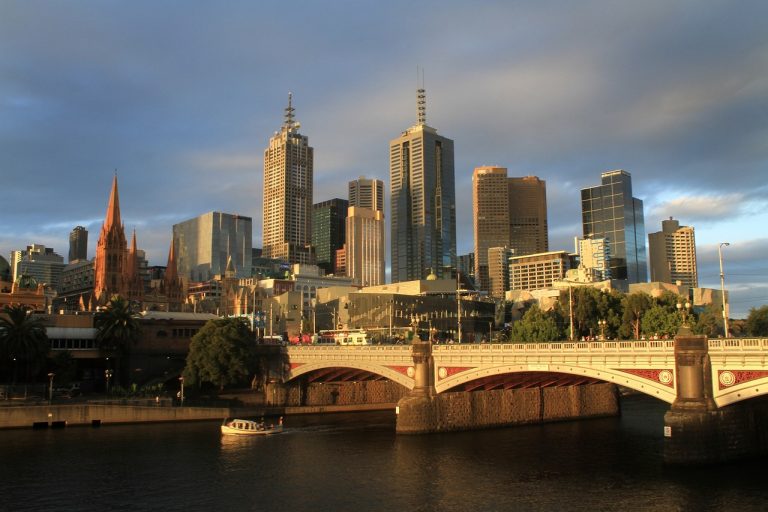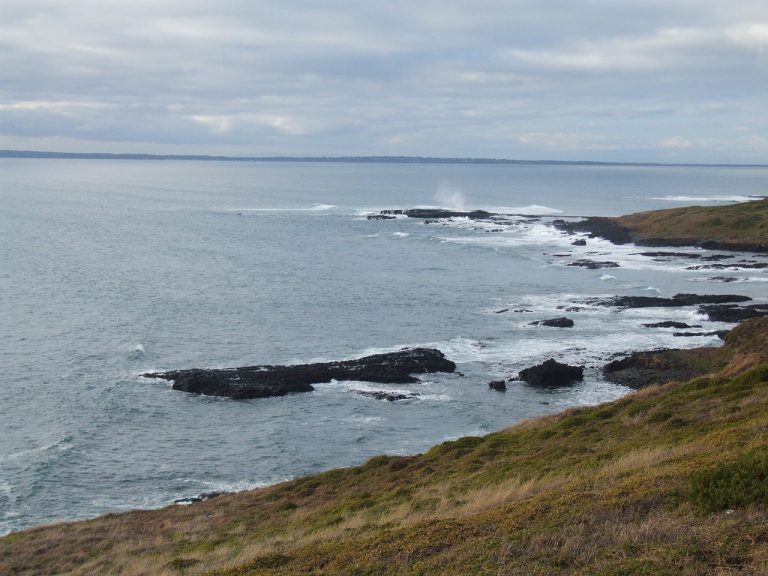Melbourne Australia Video
Historical Landmarks of Melbourne Australia: A Deep Dive
Melbourne, the capital city of Victoria, Australia, is known for its rich history and diverse cultural heritage. The city is home to numerous historical landmarks that showcase its past and contribute to its unique identity. From grand buildings to charming gardens, Melbourne offers a fascinating glimpse into its history. In this article, we will explore ten notable historical landmarks in Melbourne and delve into their significance.
1. Royal Exhibition Building
The Royal Exhibition Building is a UNESCO World Heritage-listed site and one of Melbourne’s most iconic landmarks. Built in 1880, it served as the venue for the first Australian Federal Parliament in 1901. The building’s stunning architecture, featuring a mix of Victorian and Byzantine styles, is a testament to Melbourne’s prosperity during the late 19th century. Today, it hosts various exhibitions, trade shows, and cultural events.
- Carlton Gardens: Adjacent to the Royal Exhibition Building, the Carlton Gardens provide a serene escape from the bustling city. These beautifully landscaped gardens are a popular spot for picnics and leisurely strolls.
- Museum of Melbourne: Located nearby, the Museum of Melbourne showcases the city’s history through a range of exhibitions and interactive displays. Visitors can learn about the Aboriginal heritage, immigration stories, and the city’s evolution over time.
- Keywords: Royal Exhibition Building, Carlton Gardens, Museum of Melbourne, Victorian architecture, UNESCO World Heritage site, Australian Federal Parliament
2. Flinders Street Station
Flinders Street Station is an iconic railway station in Melbourne, known for its distinctive yellow facade and prominent dome. Built in 1910, it is the oldest railway station in Australia and a symbol of the city. The station’s design reflects the Federation Free Classical architectural style, popular during the early 20th century. It serves as a major transport hub and a meeting point for locals and tourists alike.
- Federation Square: Just across from Flinders Street Station, Federation Square is a vibrant cultural precinct. It features a mix of galleries, restaurants, and outdoor spaces, hosting various events and festivals throughout the year.
- Yarra River: Flowing alongside Flinders Street Station, the Yarra River offers picturesque views and recreational opportunities. Visitors can take a leisurely cruise or enjoy a scenic walk along its banks.
- Keywords: Flinders Street Station, Federation Square, Yarra River, Federation Free Classical architecture, transport hub, cultural precinct
Melbourne Australia Image 1: 
3. State Library Victoria
The State Library Victoria is a historic library located in the heart of Melbourne. Established in 1854, it is the oldest public library in Australia. The library’s grand architecture, with its iconic domed reading room, is a sight to behold. It houses a vast collection of books, manuscripts, and artworks, making it a haven for researchers and book lovers.
- La Trobe Reading Room: The centerpiece of the library, the La Trobe Reading Room, is a magnificent space with a soaring dome and intricate plasterwork. It provides a tranquil environment for studying and research.
- Cowen Gallery: The Cowen Gallery showcases the library’s extensive collection of artworks, including paintings, prints, and photographs. It offers a glimpse into Victoria’s artistic heritage.
- Keywords: State Library Victoria, La Trobe Reading Room, Cowen Gallery, historic library, domed reading room, extensive collection
4. Old Melbourne Gaol
The Old Melbourne Gaol is a former prison that operated from 1842 to 1929. It has since been converted into a museum, providing visitors with a chilling insight into Melbourne’s dark past. The gaol is infamous for housing some of Australia’s most notorious criminals, including the infamous bushranger Ned Kelly. Guided tours offer a glimpse into the harsh conditions of prison life and the stories of its inmates.
- Ned Kelly’s Death Mask: One of the most notable exhibits in the gaol is the death mask of Ned Kelly, a legendary figure in Australian history. The mask was made shortly after his execution in 1880, preserving his likeness for future generations.
- Gallows: The gaol’s gallows, where many prisoners met their fate, serves as a chilling reminder of the harsh punishments of the past. It stands as a somber testament to Melbourne’s criminal history.
- Keywords: Old Melbourne Gaol, Ned Kelly, death mask, gallows, prison museum, notorious criminals
Melbourne Australia Image 2: 
5. Shrine of Remembrance
The Shrine of Remembrance is a war memorial dedicated to the men and women of Victoria who served in World War I. Built in the 1920s, it stands as an enduring symbol of honor and remembrance. The shrine’s classical design, inspired by ancient Greek architecture, evokes a sense of solemnity and reverence. Visitors can explore the memorial’s galleries and enjoy panoramic views of Melbourne from its observation deck.
- Remembrance Garden: The Remembrance Garden, surrounding the shrine, provides a peaceful space for reflection and contemplation. It features beautifully landscaped grounds and commemorative plaques.
- Keywords: Shrine of Remembrance, Remembrance Garden, war memorial, World War I, classical design, observation deck
6. Queen Victoria Market
The Queen Victoria Market, affectionately known as “Queen Vic Market,” is a bustling open-air market that has been operating since 1878. It is one of the largest and oldest markets in the Southern Hemisphere, offering a wide range of fresh produce, gourmet treats, clothing, and souvenirs. The market’s vibrant atmosphere and diverse offerings make it a popular destination for locals and tourists alike.
- Food Hall: The market’s Food Hall is a food lover’s paradise, showcasing a variety of international cuisines and local delicacies. Visitors can indulge in delicious street food or shop for fresh ingredients to cook at home.
- Night Market: During the summer months, the Queen Victoria Night Market comes alive with live music, entertainment, and a vibrant array of stalls. It offers a unique twilight shopping experience.
- Keywords: Queen Victoria Market, Food Hall, Night Market, open-air market, fresh produce, shopping
Melbourne Australia Image 3: 
7. St. Paul’s Cathedral
St. Paul’s Cathedral is a striking Anglican cathedral located in Melbourne’s city center. Built in the 19th century, it is known for its Gothic Revival architecture and impressive spires. The cathedral’s interior features beautiful stained glass windows and intricate woodwork. It serves as a place of worship, as well as a venue for concerts and cultural events.
- Organ Recitals: St. Paul’s Cathedral hosts regular organ recitals, showcasing the magnificent sounds of its grand pipe organ. These performances attract music enthusiasts from all over.
- Keywords: St. Paul’s Cathedral, Gothic Revival architecture, stained glass windows, organ recitals, Anglican cathedral
8. Melbourne Cricket Ground
The Melbourne Cricket Ground, commonly referred to as the MCG, is an iconic sports stadium and the birthplace of Australian football. Built in 1853, it is one of the world’s largest stadiums and has played host to numerous sporting events, including the Olympic Games and the Cricket World Cup. The MCG is an integral part of Melbourne’s sporting culture and holds a special place in the hearts of sports fans.
- Sports Museum: The MCG’s National Sports Museum offers a comprehensive collection of memorabilia and interactive exhibits, celebrating Australia’s sporting history. Visitors can learn about the nation’s sporting heroes and iconic moments.
- Keywords: Melbourne Cricket Ground, MCG, sports stadium, Australian football, National Sports Museum, sporting culture
9. Fitzroy Gardens
Fitzroy Gardens is a picturesque garden oasis located just east of Melbourne’s city center. Established in the 19th century, it is known for its beautifully manicured lawns, colorful flowerbeds, and historic landmarks. The gardens provide a tranquil retreat for locals and visitors alike, offering a peaceful escape from the bustling city.
- Captain Cook’s Cottage: One of the highlights of Fitzroy Gardens is Captain Cook’s Cottage, a historic building that once belonged to the famous British explorer Captain James Cook’s family. It was transported from England to Melbourne in 1934 and now serves as a museum.
- Conservatory: The Fitzroy Gardens Conservatory is a haven for plant enthusiasts, showcasing a diverse range of exotic flowers and plants. It provides a serene setting for leisurely walks and picnics.
- Keywords: Fitzroy Gardens, Captain Cook’s Cottage, Conservatory, garden oasis, historic landmarks, tranquil retreat
10. Parliament House
Parliament House is the seat of the Parliament of Victoria and a symbol of democratic governance. Built in the 1850s, it is an architectural masterpiece that blends neoclassical and Victorian styles. Guided tours of the building offer insights into the state’s political history and the workings of the parliament. Visitors can explore the chambers, admire the grand architecture, and witness democracy in action.
- Queen’s Hall: Queen’s Hall, located within Parliament House, is a stunning library filled with books and historical documents. It serves as a testament to the importance of knowledge and learning in a democratic society.
- Keywords: Parliament House, Parliament of Victoria, neoclassical architecture, Queen’s Hall, democratic governance, guided tours
Conclusion
Melbourne’s historical landmarks offer a captivating journey through the city’s past. From grand buildings to serene gardens, each landmark tells a unique story and contributes to Melbourne’s vibrant cultural tapestry. Whether you’re a history enthusiast, architecture lover, or simply curious about the city’s heritage, exploring these landmarks will leave you with a deeper appreciation for Melbourne’s rich history and its enduring significance.
References
– royalalbertdock.com
– museumsvictoria.com.au
– fedsquare.com
– yarrariver.melbourne
– slv.vic.gov.au
– oldmelbournegaol.com.au
– shrine.org.au
– qvm.com.au
– stpaulscathedral.org.au
– mcg.org.au
– fitzroygardens.com
– parliament.vic.gov.au







